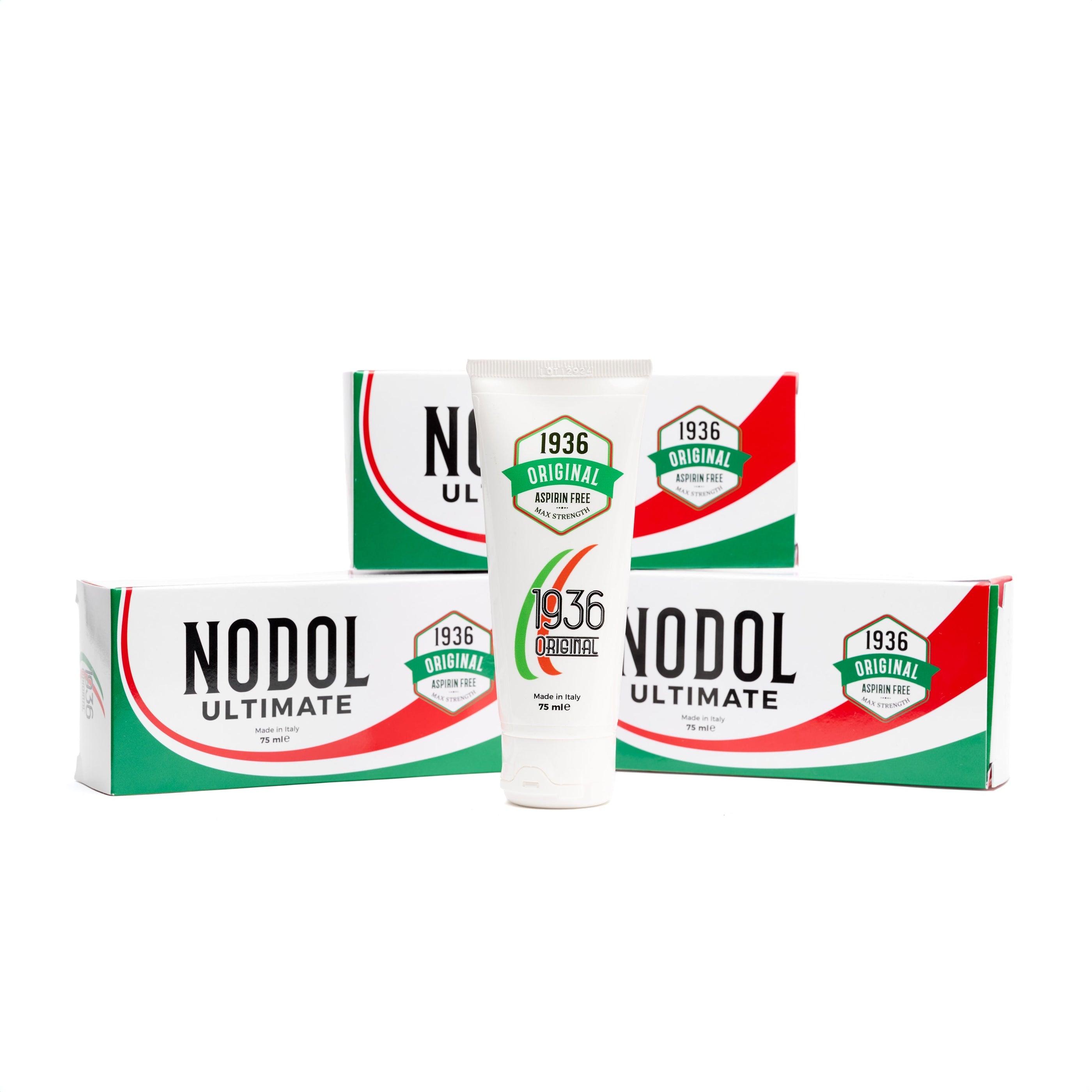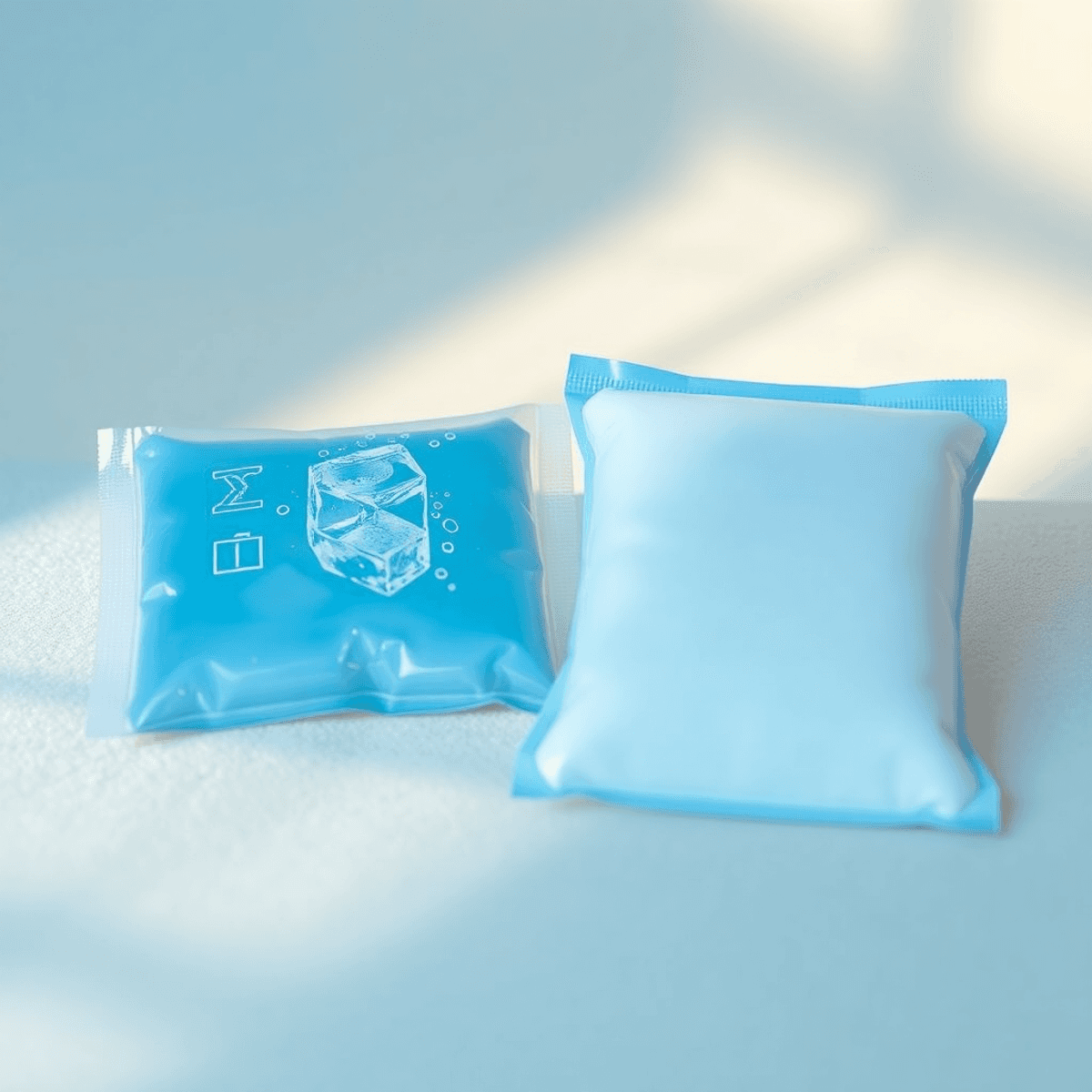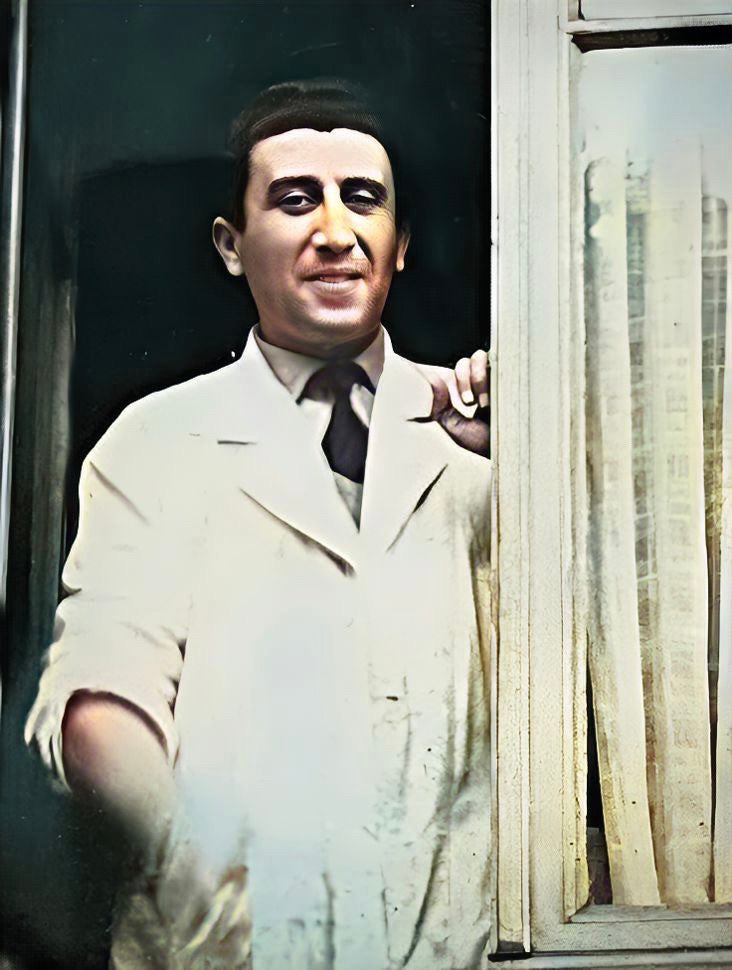Pain Relief 101: When to Use Ice Packs and When to Use Warm Compresses

Introduction
The search for effective ways to relieve pain has led many people to explore different options, from ancient remedies to modern innovations. One notable example is the original pain cream from 1936, known for its effectiveness in providing comfort and relief. However, when it comes to managing pain, two methods stand out: ice packs and warm compresses. Each method has its own unique benefits depending on the type of discomfort you're experiencing.
This article will explore the science behind using ice packs and warm compresses for pain relief. It's important to understand the differences between heat therapy and cold therapy in order to use these methods effectively. We'll discuss when to use each treatment in order to maximise their potential benefits. Whether you're dealing with acute injuries or chronic conditions, knowing how to balance these therapies can greatly improve your pain management strategy.
Understanding Pain and Its Causes
Pain is a complex experience, often arising from various sources such as muscle aches, joint pain, and inflammation. It can manifest due to different conditions, including muscle spasms and joint stiffness. Frequent causes include:
- Muscle Spasms: Often resulting from overuse or strain, leading to involuntary contractions and discomfort.
- Joint Stiffness: Common in conditions like arthritis, where inflammation restricts movement and causes pain.
Understanding the nature of pain is crucial for effective management. Pain is generally categorised into two types:
- Acute Pain: Typically sudden and severe, usually following an injury or surgery.
- Chronic Pain: Lasting more than three months, often persisting beyond the expected period of healing.
Certain conditions respond particularly well to heat and cold therapies:
- Sports Injuries: Acute conditions like sprains benefit from cold therapy to reduce swelling.
- Chronic Conditions: Osteoarthritis or fibromyalgia often require heat therapy to ease stiffness and improve blood flow.
Exploring these therapies can significantly enhance your ability to manage both acute and chronic pain effectively, tailoring treatment to specific needs. This understanding lays the foundation for choosing between ice packs and warm compresses, guiding you toward optimal pain relief strategies.
The Science Behind Cold Therapy
Cold therapy, also known as cryotherapy, plays a vital role in pain management by effectively reducing inflammation and swelling. When you apply cold to an affected area, it slows down blood flow, which helps to minimise the accumulation of fluids that cause swelling. This natural response is particularly beneficial for acute injuries.
Best Uses for Cold Therapy:
- Recent Injuries: Cold therapy is highly effective in treating fresh injuries, such as those sustained during sports or exercise.
- Sprains and Strains: Applying ice packs to sprained ankles or strained muscles can alleviate pain and prevent further swelling.
- Inflammation Reduction: It is also used to reduce inflammation caused by conditions like tendinitis or bursitis.
Methods of Applying Cold:
- Ice Packs: These are convenient and widely used. Simply wrap an ice pack in a thin towel and apply it to the affected area.
- Gel Packs: Reusable gel packs mould easily to the body's contours, providing targeted relief.
- Frozen Vegetables: In a pinch, a bag of frozen peas or corn can serve as an effective ice pack alternative.
Precaution: Always ensure there is a barrier between the cold source and your skin to prevent cold burns or frostbite. Applying cold therapy for 15-20 minutes at a time is generally recommended for optimal results.
The Science Behind Heat Therapy
Heat therapy, or the use of warm compresses, plays a crucial role in pain management by promoting blood flow and relaxing muscles. When you apply heat to an area, it dilates blood vessels, allowing more oxygen and nutrients to reach tissues, which aids in healing and recovery. This increased circulation also helps to alleviate stiffness and discomfort.
Best uses for heat therapy include managing chronic pain conditions such as osteoarthritis and fibromyalgia. These conditions often involve persistent muscle tension and joint stiffness, making them prime candidates for the soothing effects of heat. By relaxing the affected muscles, heat therapy can help reduce pain intensity and increase mobility.
There are several methods of applying heat effectively:
- Electric heating pads: Convenient for targeted application, allowing you to control temperature settings.
- Hot water bottles: A traditional method that retains heat well and is easily portable.
- Paraffin baths: Particularly beneficial for arthritis sufferers, these baths provide a warm layer of wax that envelops hands or feet, offering deep relief.
Understanding when and how to use these methods can significantly enhance your ability to manage pain effectively with heat therapy. Keeping these options in mind ensures you choose the most suitable treatment approach tailored to your specific needs.
Ice Packs vs Warm Compresses: Which One Should You Choose?
Deciding between ice packs and warm compresses depends largely on the condition you're addressing. Each therapy offers unique benefits, making them effective for different situations.
Effectiveness for Various Conditions
- Ice Packs: Cold therapy is ideal for acute injuries. It slows blood flow, reducing swelling and numbing sharp pain. This makes ice packs particularly beneficial for recent sprains, strains, and bruises.
- Warm Compresses: Heat therapy excels in managing chronic pain by dilating blood vessels and promoting blood flow. It's particularly useful for conditions like osteoarthritis, fibromyalgia, and muscle stiffness.
Situations Where One May Be Preferred
- Use Ice Packs When:
- Treating a fresh injury to minimise swelling.
- Addressing inflammation in areas like ankles or knees.
- You're dealing with a painful flare-up of gout or tendinitis.
- Opt for Warm Compresses When:
- Dealing with persistent joint stiffness.
- Preparing muscles before physical activity.
- Managing chronic pain without underlying inflammation.
Benefits of Alternating Treatments
Alternating between heat and cold—known as contrast therapy—can be particularly beneficial. This method increases blood flow to the injury site while simultaneously reducing swelling and tissue damage risk. Using both therapies can provide comprehensive relief, especially in cases of exercise-induced muscle soreness or chronic conditions like osteoarthritis.
How to Use Cold Therapy Effectively
Using cold therapy for pain relief can be an effective way to manage acute injuries and reduce swelling. Here's a step-by-step guide on how to apply this method:
1. Choose Your Cold Source
- Use an ice pack, gel pack, or a bag of frozen vegetables as a cold compress.
- For targeted areas, consider using ice massage, where you rub ice directly over the painful spot in circular motions.
2. Prepare the Area
Wrap the cold source in a thin towel to protect your skin from direct contact and potential frostbite.
3. Application Method
- Apply the cold compress to the affected area for 15-20 minutes.
- Repeat this process every 1-2 hours during the initial stages of injury.
4. Precautions
- Avoid placing ice directly on the skin to prevent skin damage.
- Discontinue use if you experience purplish-red or dark red skin colour changes, hives, or blisters.
Following these guidelines helps ensure that you use cold therapy safely and effectively for pain relief.
How to Use Heat Therapy Effectively
Understanding how to use heat for pain relief can significantly enhance your comfort and recovery. There are various types of heat therapy, each suited for specific needs.
Proper Application Methods
- Choose Your Heat Source: Options include electric heating pads, hot water bottles, or microwaveable gel packs.
- Prepare the Area: Ensure the skin is clean and dry before application.
- Apply Heat: Place the heat source on the affected area, making sure it feels warm but not hot enough to cause burns.
- Maintain Position: Keep the heat in place for a consistent period.
Recommended Duration and Frequency
- Time Frame: Apply heat for approximately 15-20 minutes per session.
- Frequency: Repeat up to three times a day, depending on the severity of pain.
Precautions
Heat therapy is not suitable for inflamed skin or open wounds. Avoid using high temperatures that might burn the skin. If you experience any adverse reactions such as increased redness or blisters, discontinue use immediately and consult a healthcare professional.
Conditions Treated with Heat and Cold Therapies
Osteoarthritis, Rheumatoid Arthritis, and Chronic Pain
Both heat and cold therapies are effective in managing symptoms of osteoarthritis and rheumatoid arthritis. Heat therapy helps to relax muscles and increase blood flow, making it ideal for chronic pain conditions such as fibromyalgia and long-term joint stiffness. On the other hand, cold therapy is beneficial for reducing inflammation and soothing acute flare-ups.
Injuries and Muscle Strains
Cold therapy is often the first choice for recent injuries like sprains, strains, or bruises due to its ability to reduce swelling. As the injury heals, heat therapy can be introduced to promote flexibility and relieve tension in the affected area.
Alternating Therapies for Enhanced Results
Alternating between heat and cold therapies can offer enhanced results in certain scenarios. For instance, this approach is beneficial for treating exercise-induced muscle damage (EIMD) or delayed onset muscle soreness (DOMS) by balancing blood flow and reducing inflammation effectively.
Understanding how these treatments work helps tailor pain management strategies according to your specific needs.
Special Techniques in Pain Management
Advanced techniques such as contrast baths and cryotherapy offer additional benefits in pain management.
Contrast Baths
This technique involves alternating immersion in warm and cold water, enhancing blood circulation and reducing inflammation. It's especially beneficial for treating injuries or conditions that respond well to fluctuating temperatures. Athletes often use contrast baths to mitigate exercise-induced muscle damage.
Cryotherapy
As a cutting-edge treatment, cryotherapy utilises extreme cold to numb pain and reduce inflammation. Methods range from localised treatments, such as ice massages, to whole-body cryotherapy chambers. While primarily a pain reliever, it also aids in reducing swelling and speeding up recovery times. Cryotherapy can be a useful tool for those with conditions like osteoarthritis or for athletes seeking faster recovery post-exercise.
These specialised techniques offer unique advantages over traditional thermotherapy methods, catering to specific needs and conditions.
Conclusion
Exploring effective treatments for sports injuries highlights the benefits of both ice packs and warm compresses. Each method offers distinct advantages, whether you're seeking immediate relief from swelling with cold therapy or easing chronic muscle tension through heat. Understanding the nuanced application of these treatments can significantly enhance your pain management strategy.
Additionally, consider integrating classic solutions such as the 1936 original pain cream, known for its comprehensive approach to pain relief. Embracing a variety of therapies ensures a well-rounded plan to manage discomfort effectively.
FAQs
When should I use ice packs for pain relief?
Ice packs should be used when treating fresh injuries to minimize swelling and numb the area. Cold therapy is ideal for acute injuries as it slows down blood flow and reduces inflammation.
What situations are best suited for warm compresses?
Warm compresses are best used for chronic pain conditions, such as osteoarthritis and muscle strains. They help to relax muscles, improve circulation, and alleviate stiffness.
How do I effectively use cold therapy?
To use cold therapy effectively, choose a cold source like an ice pack or frozen vegetables, wrap it in a thin towel to protect your skin, apply it to the affected area for 15-20 minutes, and avoid placing ice directly on the skin to prevent damage.
What precautions should I take when using heat therapy?
When using heat therapy, avoid applying heat to inflamed skin or open wounds. It is recommended to apply heat for approximately 15-20 minutes per session and ensure that the heat source is not too hot to prevent burns.
Can alternating between heat and cold therapies enhance pain relief?
Yes, alternating between heat and cold therapies—known as contrast therapy—can enhance pain relief by promoting circulation and reducing inflammation. This technique can be particularly effective for managing symptoms of both acute injuries and chronic pain.
What advanced techniques are available in pain management?
Advanced techniques in pain management include contrast baths, which involve alternating immersion in warm and cold water, and cryotherapy, a cutting-edge treatment that utilizes extreme cold to reduce inflammation and promote recovery.












